NDB Navigation
Navigation using nondirectional radio beacons (NDBs) is the oldest form of electronic navigation still in regular use. In the early days of aviation, the process of navigating between these beacons, called radio direction finding, required positioning the airplane’s antenna to receive and interpret bearing information with the ADF.
Ground Equipment
- To navigate using the ADF, the pilot tunes the receiving equipment to a ground station known as a nondirectional radio beacon (NDB).
- The NDB stations normally operate in a low or medium frequency band of 200 to 415 kHz.
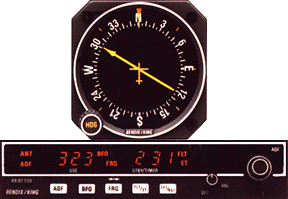

- Since NDB signals are not limited to line of sight, the ADF system provides reliable navigation at lower altitudes than VOR equipment. In addition to NDBs, your airborne ADF equipment also can receive AM commercial broadcast stations.
- The following table gives the class of NDB stations, their power, and their usable range:
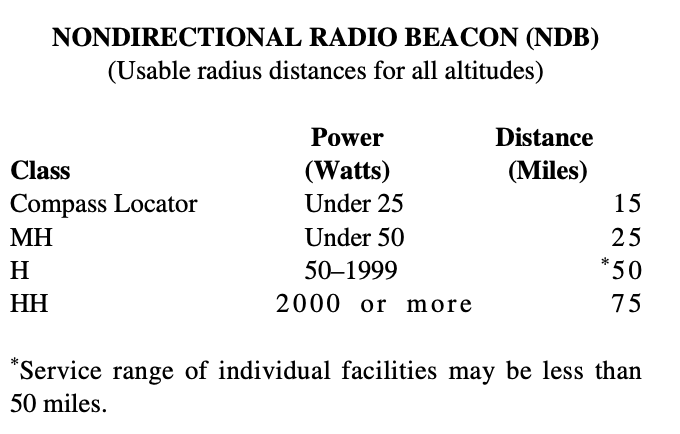
Airborne Equipment
-
ADF equipment in the aircraft permits L/MF signals to be received through the antenna, relayed to the ADF receiver where they are processed, and then sent to the ADF bearing indicator.

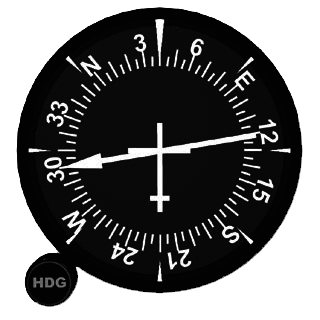
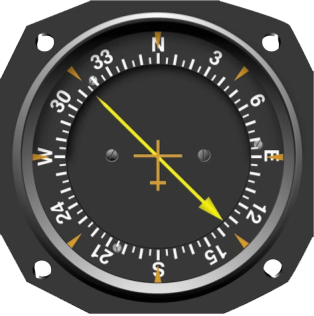
Moveable Card ADF.
Fixed Card ADF
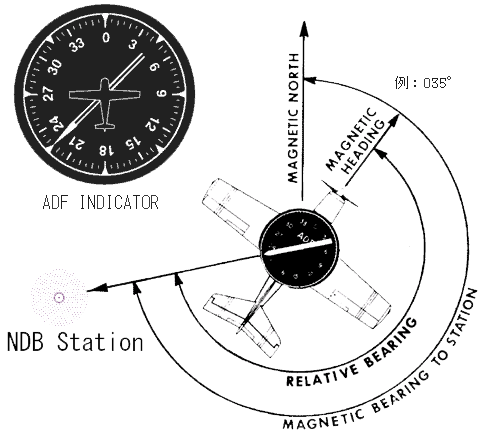
MH + RB = MB
Types of ADF Receivers
Intercepting a Bearing
Intercepting a specific bearing to track to or from an NDB is accomplished by a method similar to that used in VOR navigation. Use the ADF formula to help you with this procedure.
MH + RB = MB
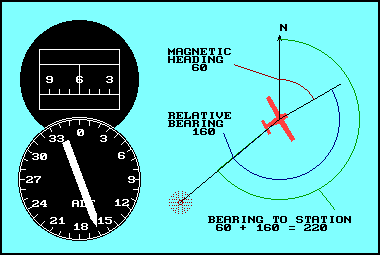
Tracking
Normally, the best way to fly to or from a station is in a straight line, which requires tracking if any crosswind is present. The tracking procedure for an ADF is similar to VOR tracking.

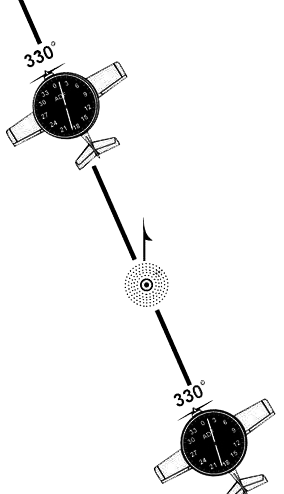
Homing
A procedure during which you always keep the nose of the aircraft pointing directly to the station is called homing to the station. To fly to an NDB using the homing procedure simply turn to position the head of the ADF needle on the aircraft’s nose
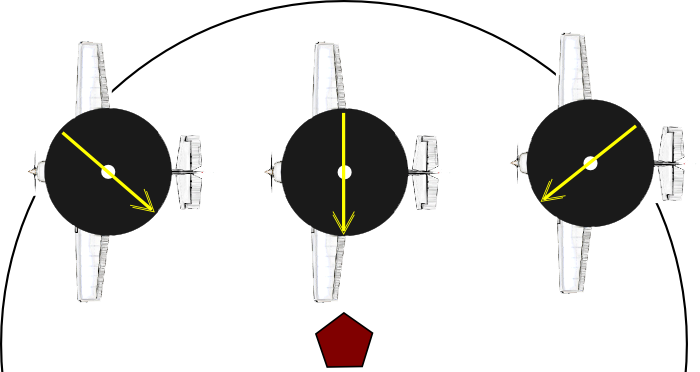
Operational Considerations
-
ADF indicator does not have an OFF flag, it is possible to inadvertently refer to the signal after it is no longer reliable.
-
One way to make sure you have a usable signal is to leave the identifier turned up to an audible level whenever you use the ADF for navigation.
-
Also, some limitations are:
- Night Effect
- Thunderstorm Effect
- Precipitation Static
- Terrain Effect
- Shoreline Effect

Night Effect
- NDB signals can be refracted by the ionosphere and return to earth 30 to 60 miles or more from the station, leading to ADF needle fluctuations.
Thunderstorm Effect
Needle tends to point to the source of the lightning flashes rather than the tuned NDB.
Precipitation Static
By a buildup of static electricity on an aircraft flying in rain, snow, or clouds.
Terrain Effect
Can occur when mountains reflect the radio waves and cause erroneous bearing indications.
Shoreline Effect
Radio waves speed up over water, causing the wave front to bend away from its normal path and pull it towards the coast.